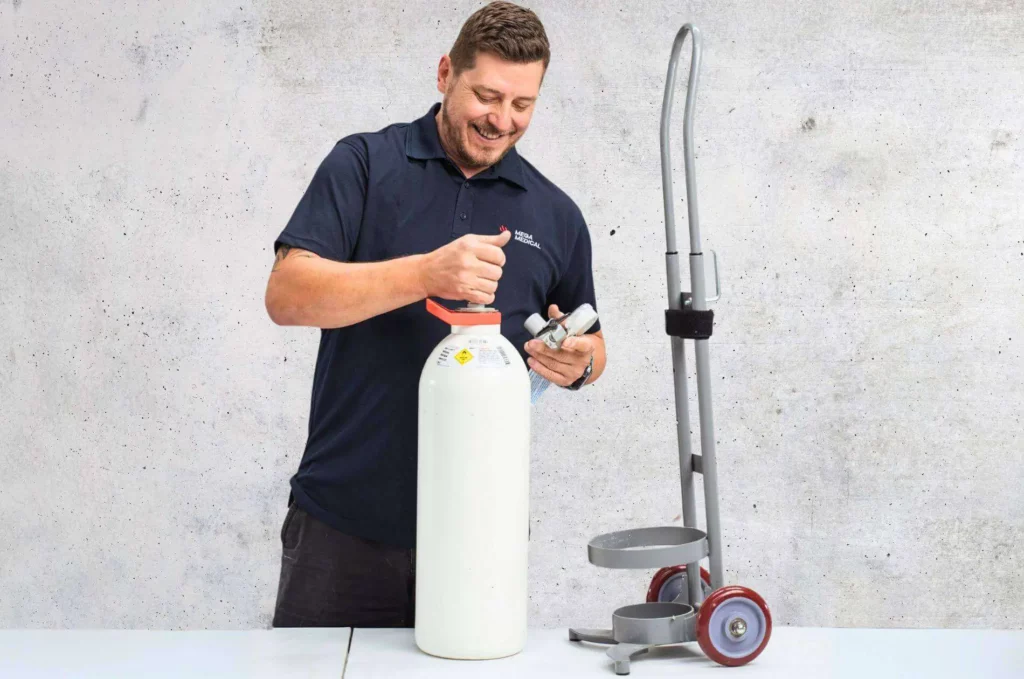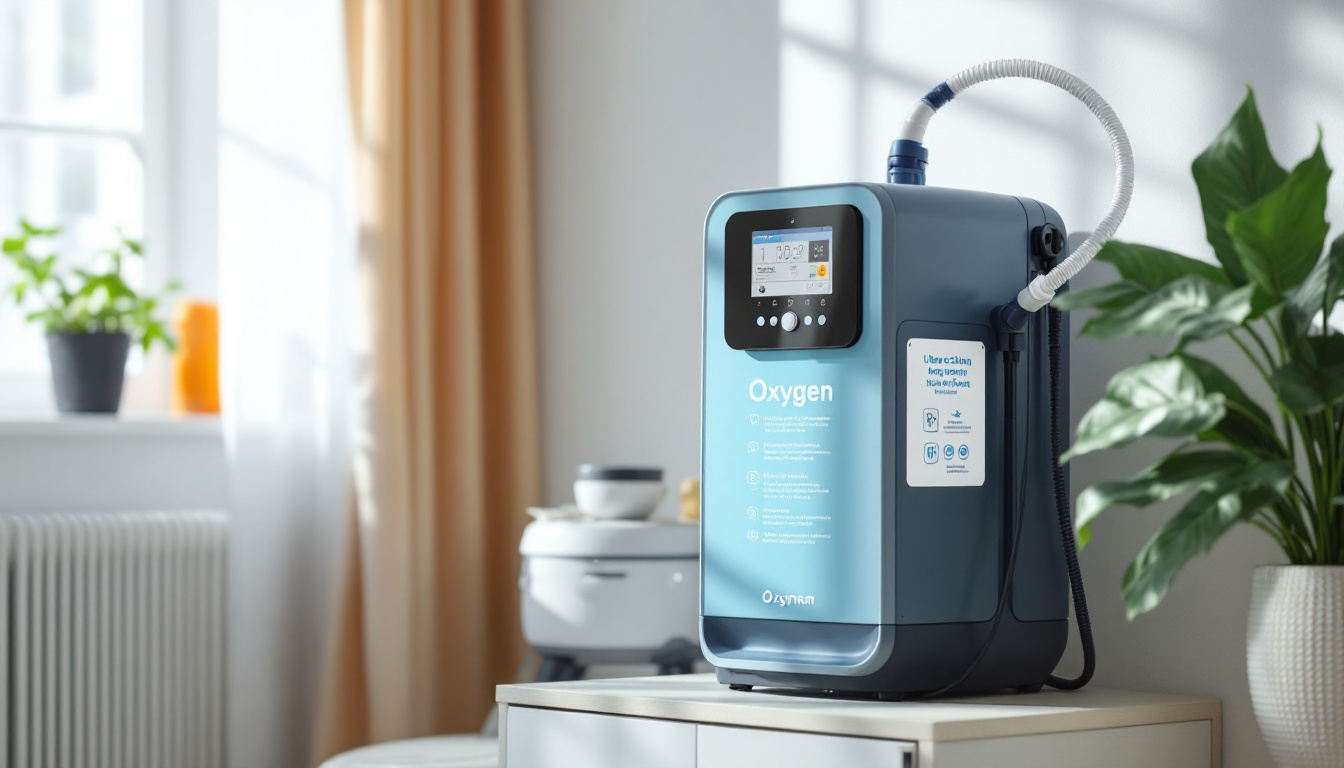Oxygen machines, also known as oxygen concentrators, have become essential tools for individuals suffering from respiratory conditions. These devices provide a steady supply of oxygen, improving the quality of life for many. However, understanding how to use them effectively is crucial for maximising their benefits. This article outlines the best practices for using an oxygen machine at home, ensuring users can breathe easier and live healthier lives.
Understanding Your Oxygen Machine
Before diving into best practices, it is vital to understand how an oxygen machine operates. Typically, these devices take in ambient air, filter it, and concentrate the oxygen for therapeutic use. Familiarising oneself with the specific model is essential, as features and functionalities can vary significantly.
Using an oxygen machine for home can significantly enhance the quality of life for individuals with respiratory issues. By understanding the device, setting it up correctly, using it effectively, maintaining it properly, and adhering to safety precautions, users can ensure they receive the maximum benefit from their oxygen therapy.
Types of Oxygen Machines
There are primarily two types of oxygen machines: stationary and portable. Stationary models are designed for home use and generally provide a higher flow rate, while portable units are lightweight and battery-operated, allowing for mobility.
Knowing the type of machine being used can help in understanding its limitations and capabilities. For instance, portable machines may not deliver the same oxygen concentration as stationary ones, making it important to use them appropriately based on the prescribed requirements. Additionally, some portable units come equipped with pulse dose technology, which delivers oxygen only when the user inhales, thus conserving battery life and extending usage time during outings.

Reading the Manual
Each oxygen machine comes with an instruction manual that outlines its operation, maintenance, and safety precautions. Reading this manual thoroughly is crucial, as it contains specific information tailored to the device. Users should pay close attention to the recommended settings, maintenance schedules, and troubleshooting tips.
Moreover, the manual often includes valuable insights on the importance of regular filter changes and cleaning routines, which are essential for maintaining optimal performance. Neglecting these aspects can lead to decreased efficiency and potential health risks. Some manuals may also provide guidance on how to recognise signs of malfunction or when to seek professional assistance, ensuring that users remain informed and proactive in their care.
Setting Up Your Oxygen Machine
Proper setup is key to ensuring the oxygen machine operates efficiently. A well-placed machine can enhance performance and user comfort.

Choosing the Right Location
When selecting a location for the oxygen machine, consider factors such as accessibility, proximity to power outlets, and ventilation. The machine should be placed in a well-ventilated area, away from direct sunlight and heat sources. This helps in maintaining optimal performance and prevents overheating.
Additionally, ensure that the area is free from clutter and obstructions. This not only provides easy access for the user but also allows for proper airflow around the device, which is essential for its functioning. It may be beneficial to position the machine near a bedside table or a comfortable chair, allowing the user to easily reach it while resting or engaging in daily activities. Furthermore, consider the potential for noise; placing the machine in a quieter corner of the room can enhance the overall comfort of the user, especially during night-time hours. Find more about comfortable on https://pubmed.ncbi.nlm.nih.gov/30390181/
Connecting the Equipment
Once the location is determined, the next step is to connect the machine to a power source. Ensure that the power outlet is functioning correctly and that the cord is not damaged. After plugging in the machine, it is advisable to check the settings as per the doctor’s prescription.
It’s also important to attach the nasal cannula or mask correctly. Ensure that the cannula fits snugly in the nostrils without causing discomfort, as this will help in delivering the oxygen effectively. In addition, it may be useful to have a backup supply of accessories, such as extra cannulas or masks, readily available. This ensures that the user can quickly replace any worn or damaged parts, maintaining a continuous and effective oxygen supply. Regularly checking the equipment for cleanliness and functionality is also crucial, as this not only prolongs the life of the machine but also safeguards the user’s health by preventing infections or complications associated with unclean equipment.
Using the Oxygen Machine Effectively
Using the oxygen machine correctly is paramount for achieving the desired therapeutic effects. Adhering to the prescribed settings and usage guidelines can significantly improve the user’s experience.
Adhering to Prescribed Oxygen Levels
Healthcare professionals typically prescribe specific oxygen flow rates based on individual needs. It is essential to adhere to these recommendations, as using too much or too little oxygen can lead to complications. Regularly monitor the flow rate and make adjustments only under medical guidance.
Users should also be aware of their oxygen saturation levels, which can be monitored using a pulse oximeter. This device provides real-time feedback on blood oxygen levels, helping users understand if their current settings are adequate.
Establishing a Routine
Incorporating the use of an oxygen machine into daily routines can help users adapt more easily. Setting specific times for using the machine, such as during meals or while watching television, can create a consistent pattern. This not only helps in remembering to use the device but also ensures that oxygen therapy becomes a natural part of daily life.
Maintaining Your Oxygen Machine
Regular maintenance of the oxygen machine is crucial for its longevity and efficiency. Neglecting maintenance can lead to reduced performance and potential health risks.
Cleaning and Disinfecting
Regular cleaning of the machine is essential to prevent the buildup of dust and bacteria. Most manufacturers recommend cleaning the exterior with a damp cloth and mild detergent. Additionally, the nasal cannula or mask should be cleaned according to the manufacturer’s guidelines, typically with warm soapy water, and allowed to air dry completely.
It is advisable to replace the cannula or mask every few weeks, or as recommended, to ensure optimal hygiene and performance. Regularly inspect the tubing for any signs of wear or damage, and replace it if necessary.
Scheduled Professional Maintenance
In addition to regular cleaning, users should schedule professional maintenance checks as recommended by the manufacturer. These checks can identify potential issues before they become significant problems, ensuring the machine operates at peak efficiency.
Safety Precautions When Using an Oxygen Machine
Safety is paramount when using an oxygen machine. Oxygen is a highly flammable substance, and taking precautions can prevent accidents and injuries.
Avoiding Fire Hazards
Users should avoid using the oxygen machine near open flames, such as candles, gas stoves, or fireplaces. Additionally, smoking while using an oxygen machine is strictly prohibited, as it poses a severe fire risk.
It is also advisable to keep flammable materials, such as aerosols or cleaning products, away from the oxygen machine. Ensuring that the area around the machine is free from clutter can further reduce fire hazards. Click here to find more about aerosols.
Monitoring for Signs of Distress
Users should be vigilant for any signs of distress while using the oxygen machine. Symptoms such as shortness of breath, dizziness, or confusion may indicate that the oxygen levels are not adequate. In such cases, it is crucial to seek medical assistance immediately.
Travel Considerations with an Oxygen Machine
For those who wish to travel while using an oxygen machine, planning is essential. Whether travelling domestically or internationally, understanding the requirements and regulations can make the journey smoother.
Portable Oxygen Machines
Portable oxygen machines are designed for travel, but it is important to check the battery life and ensure that the device is fully charged before embarking on a trip. Carrying extra batteries and a charging device can provide peace of mind during travel.
It is also advisable to inform airlines or travel companies about the need for oxygen therapy in advance. Many airlines have specific policies regarding the use of oxygen on flights, and notifying them beforehand can help avoid complications.
Planning for Emergencies
When travelling, always have a contingency plan in case of emergencies. This includes knowing the location of medical facilities at the destination and carrying a list of emergency contacts. Additionally, having a backup supply of oxygen can be invaluable in case of unforeseen circumstances.
Conclusion
Moreover, being proactive about travel considerations and emergency planning can further empower users to lead active and fulfilling lives. With the right knowledge and practices, individuals can breathe easier and enjoy the activities they love.
Ultimately, consulting with healthcare professionals regularly will ensure that users stay informed about their oxygen therapy needs and any advancements in technology or techniques that may enhance their experience.
Find more on: Oxygen Machine Options Which One Is Right for You

